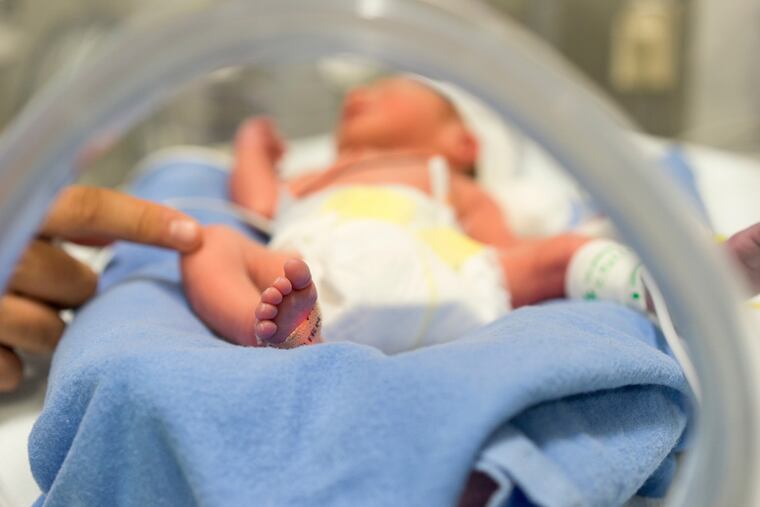White infants in rural Pennsylvania especially hard hit by opioid crisis, data suggest
After steady increases for 17 years, the annual rate of newborns suffering from drug withdrawal in Pennsylvania seems to have leveled off. But it remains alarmingly high.

The percentage of babies who are born exposed to addictive drugs in Pennsylvania is undiminished, and the problem is disproportionately affecting the infants of rural white women, according to an updated analysis released Tuesday.
Of the 3,354 drug-exposed babies born in a recent 12-month period, 1,833 had to be treated for drug withdrawal, the report by the Pennsylvania Health Care Cost Containment Council (PHC4) found.
One potentially encouraging sign in the data for 2017-18 is that the percentage of drug-exposed and drug-dependent newborns was basically unchanged from the previous report in 2016-17. The rates soared between 2000 and 2016, reflecting the opioid addiction epidemic. Almost 3 percent of babies born in Pennsylvania test positive for drug exposure.
“While the rates might be leveling off, and that is encouraging, it is too soon to tell whether these numbers will begin to steadily decline or spike upwards again,” said Joe Martin, executive director of PHC4, an independent, state-funded organization. “With just over 1,800 babies born addicted in the most recent year studied, this remains a serious and heart-wrenching problem.”
The analysis, which used hospitalization data from October 2017 through September 2018, found that about 14 out of every 1,000 newborns needed hospital treatment for drug withdrawal, medically known as neonatal abstinence syndrome (NAS). That rate was not statistically different from 2016-17.
Many newborns suffering withdrawal spend weeks or months in the hospital, gradually being weaned from drug dependence by getting decreasing doses of oral morphine or methadone. NAS-related hospitals stays added 23,000 days and cost $15.2 million in 2017-18, the analysis found.
Although more than half of the drug-exposed newborns did not need treatment for withdrawal, they still were supposed to get special attention. A year ago, Pennsylvania law was changed to require than any newborn “affected” by the mother’s drug use during pregnancy must be reported by the hospital to the county’s child protective agency, which must assess whether protective custody is needed. The county agency has to develop a “plan of safe care” for babies who go home instead of into custody.
That change was a recognition that newborns of mothers grappling with addiction are at elevated risk of abuse and neglect.
The new report reveals a contrast in the demographics underlying the problem of drug-dependent infants. In rural counties, about 20 of every 1,000 newborn hospital stays involved NAS, compared to about 13 per 1,000 in urban counties.
While the actual numbers in rural counties are small because these areas are less populated, the burden is clear. In Elk County, for example, 17 newborns suffered NAS in the 12-month period, but that translated to 63 out of every 1,000 births — the highest rate in the state.
NAS rates were also higher for white newborns than for black or Hispanic babies, and for newborns from homes with modest incomes (under $40,000) than higher incomes. Another indicator of the income disparity: Medicaid covered 89 percent of NAS-related hospitalizations.
Complications were common among drug-dependent newborns, with a quarter of them suffering respiratory distress, and about 15 percent suffering low birth weight or prematurity, or both.